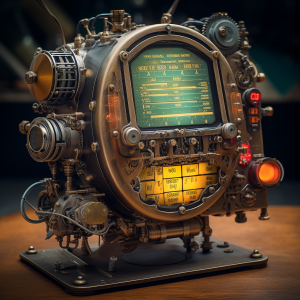Working with us is really easy. We’ll adapt our workflow to meet your needs whenever possible.
Our Normal Process
Step 1: Send Us a Product List
Our requirements are pretty straightforward. We need a CSV file or spreadsheet with following layout:
- Product ID
- Product Category
- Product URL (okay to leave blank if you haven’t published the page yet)
- Product Image URL (or name)
- Product Image URL [n] (provide as many images as possible in additional columns)
It’s critical that we have high quality images to work with. If the images on your site are heavily optimized for size and load time, we’d prefer you send us originals in a separate zip file. We have a lot of trouble working with the .webp format, so please avoid sending those if possible.
Step 2: Nail Down Your Requirements
Once we have the list we’ll take some time to analyze it, providing an feedback on image quality if needed. We’ll also come back to you with the following questions:
- Desired image dimensions – our default is to return images with the same dimensions as the image we’re working with
- Desired product size within each scene. In general we need to reduce the size to make room for a scene to emerge around it.
- Desired scene concepts. We’ll provide our suggestions, but we’ll also do our best to deliver on your wishes.
- Quantity desired per product.
- How you want them returned to you.
Step 3: Production & QA
Our turn-around time on production will vary based on the size and complexity of the project. In general we’re able to turn them around in a day or two. Our team spends considerable time dialing in the scene configuration for each product.
We generally do a test run, generating a small number of images per product, making tweaks to configuration where needed. Following that, we’ll do a full production run. Some products will require a second or third run. Others we’ll determine aren’t workable. We try to keep those to a minimum, but sometimes it’s out of our control do to lighting, weird angles, bad input image quality, etc..
Our team reviews every image that is produced, selecting options we feel are worthy of putting in front of you. If we can’t produce an image we’re proud of we won’t approve anything.
Step 4: Delivery
Once we’ve produced images to your specifications we will send them to you in the manner you desire. We usually just share them via Google Drive. Once you’ve reviewed them, if there are any you aren’t happy with just let us know and we’ll either create replacements for you or credit your order.
Why We Took This Approach
Everything in generative AI is new. If anyone tells you they have it all figured out they are lying. When we started working on this problem we assumed we were building a user-facing application. Unfortunately two obstacles emerged that we feel are insurmountable:
- Most images are unusable. The highest rate of useable images we see in production is around 50%. The lowest rate literally approaches zero. We didn’t want to build a product that is frustrating to use, so the idea of making you sort through 50 images to find one keeper was out of the question.
- Optimizing prompts and settings is really hard. Most of our competitors try to drop you in front of an interface and ask you to write your own prompt. We believe this is a mistake, at least for now. We spend literally hours refining a single prompt for a given category. Once it works, we can rely on it, but the investment is significant.
We certainly plan to move to a self service model in the near future, once we’ve solved these two problems.
API Option
Once we’ve worked with you for a while, if you’d prefer to communicate via API we’re all for it. We’ll provision an endpoint on our side for you to send us image requests. We can also send you the results via API calls if you like.
Wrapping Up
All of this is very new and we’re making improvements all the time. If there’s something we can do to make things work better for you we’d love to hear about it.


